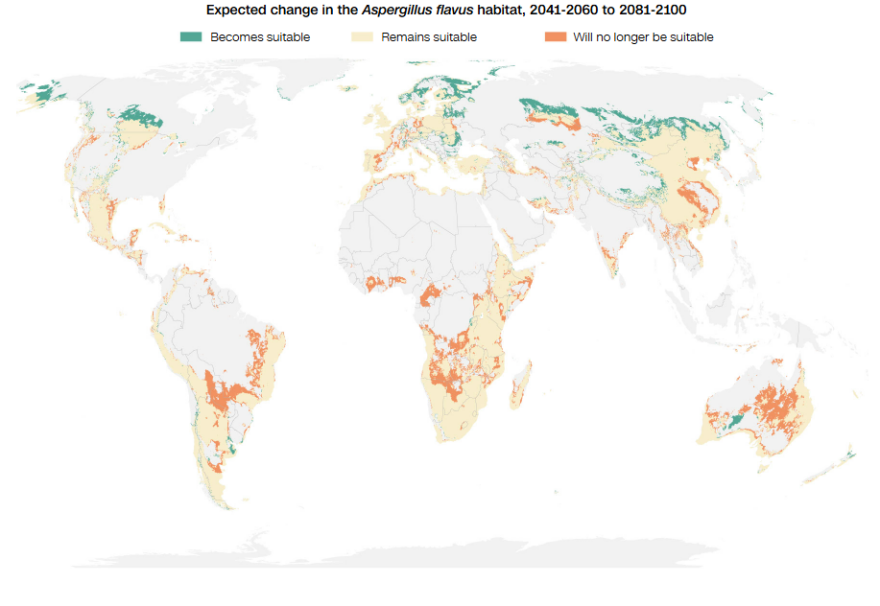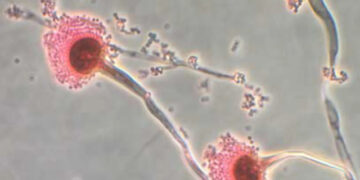A hidden yet formidable threat is increasingly jeopardizing ecosystems worldwide: fungi. A recent scientific study from the University of Manchester, currently undergoing peer review, indicates that climate change may significantly broaden the distribution of the common fungus Aspergillus, responsible for severe infections and millions of deaths each year.
As reported by CNN, this fungus is part of a vast and still largely uncharted group of organisms vital to ecosystems but capable of wreaking havoc on human health. Recent estimates show that fungal infections claim over 2.5 million lives worldwide annually.
CNN: Researchers express alarm over deadly fungi that can “consume us from within”
Commonly found in soil, plant debris, water, and air, Aspergillus is inhaled by humans on a daily basis. For most individuals, the immune system can ward off complications. However, for those with asthma, cystic fibrosis, COPD, cancer, organ transplants, or severe COVID-19 or flu, it can be life-threatening.
If the immune system fails to combat its spores, “the fungus starts to grow and effectively ‘eats you from the inside out,’” explains Norman van Rhijn, a researcher at the University of Manchester and lead author of the study. The mortality rate for patients with aspergillosis ranges from 20% to 40%, and diagnosis can be particularly challenging as symptoms—such as fever, cough, and fatigue—are often mistaken for other illnesses.
The resilience and expansion of Aspergillus species
The study focuses on two primary species:
- Aspergillus flavus, which favors warm, tropical environments, could extend its range by 16% if fossil fuel usage remains high, potentially invading northern China, Russia, and the U.S. It is notably drug-resistant and threatens crop production, jeopardizing global food security. In 2022, the WHO classified it as a “critical” fungal pathogen.
- Aspergillus fumigatus, which thrives in temperate climates, is projected to increase by 77.5% by 2100, potentially affecting 9 million people in Europe alone.
Conversely, some areas, particularly in sub-Saharan Africa, may become too hot for these fungi to grow, but such conditions could drastically disrupt local ecosystems, as fungi are vital for soil fertility.
Climate change fuels resistance and spread
Another concerning aspect is that fungi may become more heat-resistant, allowing them to survive better within the human body. Additionally, extreme weather phenomena—such as floods, droughts, and heatwaves—aid in the long-distance dispersal of their spores. A significant example is the surge in fungal infections following the 2011 tornado in Joplin, Missouri.
Researchers believe the global community is ill-equipped to address this fungal threat. Currently, only four classes of antifungal drugs exist, with an increasing number of strains showing resistance.
Professor Justin Remais from UC Berkeley, who oversees a study involving over 100 million U.S. patients, informed CNN that more than 20,000 cases of aspergillosis were reported from 2013 to 2023, with a 5% annual increase. However, the lack of data may obscure even higher figures.

Projected habitat shift of Aspergillus flavus, 2041–2060 to 2081–2100

Projected habitat shift of Aspergillus fumigatus, 2041–2060 to 2081–2100
“There is a need for immediate action”
Professor Elaine Bignell, co-director of the MRC Centre for Medical Mycology at the University of Exeter, emphasizes that this new study highlights a significant yet underestimated public health risk. She advocates for enhanced funding for research and improved epidemiological tracking.
The scientific community hopes that the popularity of TV series like The Last of Us will raise public awareness—albeit through fiction—of the genuine dangers posed by fungi, which, as Bignell states, “aren’t just horror stories, but a real threat.”
Ask me anything
Explore related questions

















